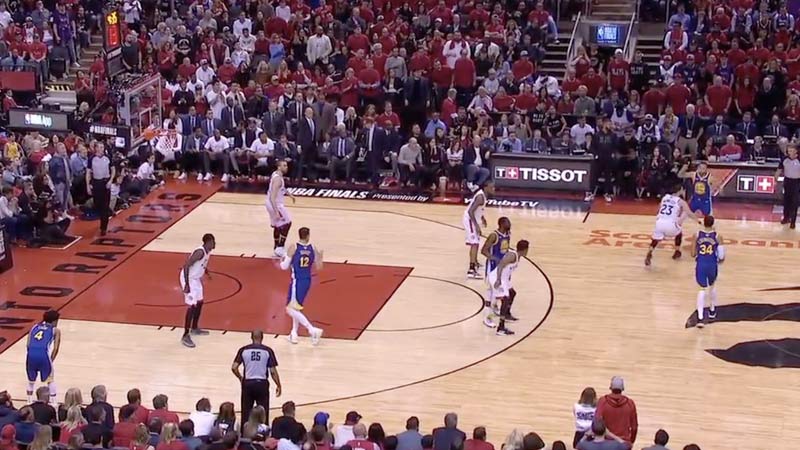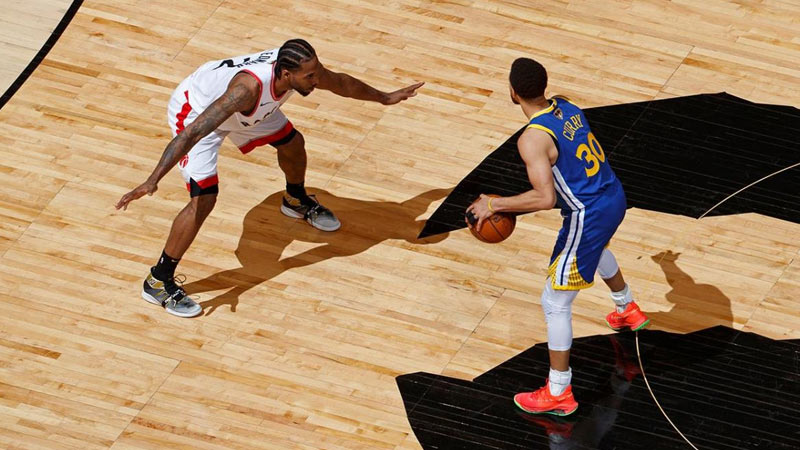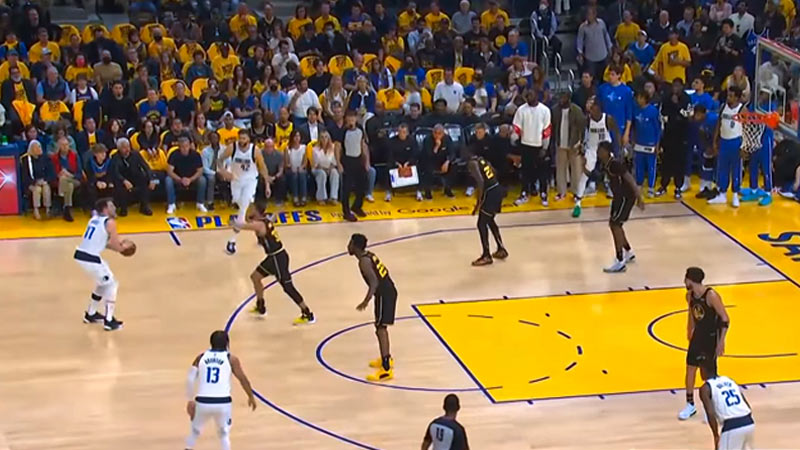In the world of basketball, strategic defensive schemes play a vital role in disrupting opponents’ offensive flow.
One such defensive strategy is the Box and One, known for its ability to neutralize star players and create defensive advantages.
In this comprehensive guide, we will delve into the intricacies of the Box and One Defense, exploring its purpose, and techniques.
We will also go through the advantages, drawbacks, and significance of this phenomenon in the game of basketball. Let’s get into the deep parts of this topic in the following section.
What Is a Box and One in Basketball?
The Box and One defense is a highly strategic and specialized approach employed in basketball to neutralize a specific offensive player who poses a significant scoring threat to the opposing team.
It is typically utilized against key scorers or playmakers who have the potential to dominate the game.
In the Box and One defense, the defensive players adopt a specific positioning on the court. Four defenders form a box-like zone defense, with each player covering a specific area within the zone.
These defenders work together to deny passing lanes and impede offensive progress. Their primary objective is to limit the opponent’s scoring opportunities by obstructing driving lanes, contesting shots, and providing help defense.
Meanwhile, one defender assumes the role of the “one” in the Box and One defense. This defender is assigned the task of face-guarding the designated offensive player targeted for containment.
The face-guarding defender’s primary focus is to deny the designated player from receiving passes, disrupt their rhythm, and make scoring difficult for them.
What Is a Box and One Defense in Basketball?
The Box and One defense is a defensive strategy designed to disrupt offensive strategies by neutralizing the primary scoring threat on the opposing team.
In this defensive scheme, four defenders form a “box” in the paint area, aiming to protect the rim, contest shots, and secure rebounds.
The fifth defender is assigned the task of face-guarding the opponent’s most dangerous offensive player, denying them the ball and making it difficult for them to receive passes or find open scoring opportunities.
The strength of the Box and One defense lies in its combination of zone principles and man-to-man coverage.
While the four defenders in the “box” maintain their defensive positions and responsibilities within the zone, the defender assigned to the individual player operates with man-to-man principles, providing constant pressure and denying passing lanes.
To execute the Box and One defense effectively, communication among defenders is crucial. They must communicate switches, rotations, and help-side responsibilities to ensure seamless defensive coverage.
How to Beat a Box and 1 in Basketball?

Source: sbnation.com
By implementing these strategies – employing ball movement and player motion, exploiting weak-side gaps, utilizing screens and picks, developing a balanced offensive attack, and making quick decisions – teams can overcome the challenges posed by the Box and One defense.
Ball Movement and Player Motion
To overcome the Box and One defense, teams should focus on continuous ball movement and off-ball player motion. By constantly passing the ball and keeping players in motion, it forces the defense to adjust and opens up gaps and passing lanes.
Quick and precise ball movement can create scoring opportunities and prevent the defense from locking down on individual players.
Exploiting Weak-Side Gaps
Attacking the weak side of the defense can be a successful strategy against the Box and One.
By using cuts and screens on the weak side, teams can create imbalances in the defense and force defenders to rotate, leaving gaps and openings for scoring opportunities.
Effective weak-side movement can confuse the defense and create advantageous situations.
Utilizing Screens and Picks
Screens and picks can be instrumental in breaking down the Box and One defense. By setting effective screens, teams can free up the designated player being face-guarded, making it difficult for the defender to stick to them.
This creates confusion within the defense and opens up opportunities for the designated player to receive passes or create scoring chances.
Balanced Offensive Threats
Developing a balanced offensive attack is crucial when facing a Box and One defense.
By having multiple players who can score efficiently and contribute offensively, it becomes challenging for the defense to solely focus on shutting down one player.
A balanced attack forces the defense to spread their attention, creating more opportunities for other players to step up and make an impact.
Quick Decision-Making
Against the Box and One defense, quick decision-making is essential. Players need to make rapid passes, decisive cuts, and take advantage of defensive rotations.
By making quick decisions, teams can catch the defense off-guard and exploit any openings or mismatches that arise. The ability to read the defense and make split-second decisions is crucial in dismantling the Box and One defense.
Benefits of Box and One

Source: si.com
By limiting key scorers, adapting to opponents’ strengths and weaknesses, and providing flexibility in coverage, the Box and One defense enhance a team’s defensive capabilities.
Limiting Key Scorers
One of the primary advantages of the Box and One defense is its ability to neutralize a dominant offensive player.
By assigning a dedicated defender to face-guard the key scorer, the defense disrupts their offensive rhythm and makes it challenging for them to receive passes or create scoring opportunities.
This strategic approach can significantly impact the opposing team’s overall offensive effectiveness.
Defensive Versatility
The Box and One defense offer teams a high level of defensive versatility. Coaches can adapt and tailor their defensive strategy based on the strengths and weaknesses of the opponents.
The flexibility allows for adjustments in guarding specific players, denying passing lanes, and disrupting offensive sets, providing the team with a strategic advantage.
Flexibility in Coverage
The Box and One defense provide flexibility in coverage within the defensive scheme. While one defender focuses on face-guarding the designated player, the other four defenders form a zone-like “box” to protect the paint and provide help defense.
This flexibility enables the defense to adjust quickly to changing offensive strategies or to provide additional support to defenders when needed. It allows for seamless rotations, closing out on shooters, and contesting shots effectively.
It disrupts offensive rhythm, forces opponents to adjust their game plans, and provides opportunities to create turnovers and transition into fast-break scoring opportunities.
Drawbacks of Box and One
By addressing these drawbacks proactively, teams can mitigate the vulnerabilities of the Box and One defense.
Developing a balanced defensive approach, improving communication and coordination, and emphasizing physical conditioning can help minimize the impact of these drawbacks.
Vulnerability to Other Offensive Threats
While the Box and One defense aim to shut down a specific player, it may leave other offensive threats on the opposing team unguarded.
By allocating significant defensive resources to neutralize one player, the defense becomes more susceptible to skilled offensive players who can exploit the openings and create scoring opportunities.
Teams employing the Box and One defense must be aware of the potential risk of leaving other offensive threats unchecked and develop strategies to address these challenges.
Communication and Coordination Challenges
The Box and One defense require seamless communication and coordination among defenders. Quick rotations, timely switches, and effective help defense rely on clear and concise communication among teammates.
Failure to communicate properly can result in defensive breakdowns, leaving openings for easy scoring chances.
Coordinating movements, rotations, and assignments within the defense can be demanding, and teams must invest time and effort in developing effective communication strategies to overcome these challenges.
Fatigue and Endurance
The Box and One defense demands high energy and endurance from the defenders. Constant rotations, closing out on shooters, and contesting shots require sustained effort throughout the game.
Defenders must maintain their physical conditioning and endurance to execute the defense effectively. Fatigue can lead to lapses in focus and slower defensive reactions, compromising the integrity of the defense.
Coaches must ensure that players are adequately conditioned to endure the physical demands of the Box and One defense and have strategies in place to manage fatigue effectively.
Significance of Box and One in Basketball
The Box and One defense hold significant importance within a coach’s defensive playbook. It offers a strategic advantage by specifically targeting and limiting the impact of star players or offensive threats.
By assigning a dedicated defender to face-guard the key scorer, the defense disrupts offensive strategies, frustrates opponents, and forces them to adjust their game plan.
The Box and One defense can provide teams with a distinct competitive edge. It allows coaches to adapt their defensive approach based on the strengths and weaknesses of the opposing team.
By neutralizing a star player, the defense can disrupt the flow of the opponent’s offense, creating opportunities for turnovers, contested shots, and defensive rebounds.
Moreover, the Box and One defense enhances a team’s versatility in countering strong offensive threats. It offers a flexible defensive option that can be employed strategically throughout the game or in specific situations to change the momentum.
Coaches can deploy the Box and One defense to break the rhythm of an opponent’s offense, force them out of their comfort zone, and put additional pressure on secondary scorers to step up.
FAQs
Are the Box and One defense legal in basketball?
Yes, the Box and One defense is legal and within the rules of basketball. It is a recognized defensive strategy used to neutralize key offensive threats.
Can the Box and One defense be used for the entire game?
The Box and One defense is typically employed as a situational defense to neutralize specific offensive players or disrupt opponents’ offensive strategies. It is not commonly used for the entire game.
How do teams adjust to the Box and One defense?
Teams facing a Box and One defense must adapt by utilizing other offensive threats, exploiting weak-side gaps, and employing effective player movement and screening actions.
How can the designated player in the Box and One defense still contribute to the offense?
The designated player in the Box and One defense can create opportunities for their teammates by drawing defensive attention, setting screens, and making quick passes to open teammates.
What are the keys to the successful execution of the Box and One defense?
Effective communication, quick rotations, disciplined positioning within the zone, and denying the designated player the ball are essential for the successful execution of the Box and One defense.
End Call
The Box and One defense is a formidable weapon in a basketball team’s arsenal, capable of neutralizing star players and disrupting opponents’ offensive strategies.
By assigning one defender to face-guard the designated player while the remaining four defenders form a zone-like “box,” this defensive scheme aims to limit scoring opportunities and frustrate offensive flow.
While the Box and One defense come with its drawbacks, such as vulnerability to secondary offensive threats and communication challenges, its strategic significance cannot be overlooked.
Coaches and players who master the Box and One defense gain a valuable tool to counter dominant offensive threats and create defensive advantages. Best wishes.







